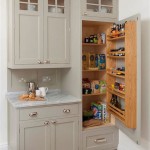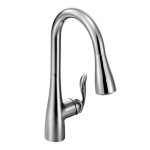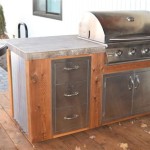How Long Should Your Kitchen Runner Be? A Comprehensive Guide
Determining the appropriate length of a kitchen runner is crucial for both aesthetics and functionality. A well-chosen runner can enhance the visual appeal of your kitchen, provide comfort underfoot, and help protect your flooring from spills and wear. However, a runner that is too long or too short can create an awkward appearance and even pose a safety hazard. This article provides a detailed guide to help you select the optimal length for your kitchen runner, considering various factors such as kitchen layout, foot traffic, and desired aesthetic.
Understanding the Importance of Proper Runner Length
The length of your kitchen runner directly impacts the overall look and feel of your kitchen space. A runner that is too short may appear insignificant and fail to serve its intended purpose of protecting the floor or providing cushioning. Conversely, a runner that is excessively long can overwhelm the space, obstruct walkways, and potentially increase the risk of tripping. Therefore, careful consideration of the runner's length is essential to achieve a balanced and functional kitchen design.
Beyond aesthetics, the practicality of the runner’s length is paramount. The primary purpose of a kitchen runner is often to provide a comfortable surface to stand on while performing tasks such as cooking or washing dishes. A runner should ideally cover the areas where you spend the most time standing. A runner that ends too soon might leave a critical area unprotected and uncomfortably exposed to the hard flooring.
Another factor to consider is the potential for the runner to interfere with cabinet doors or appliances. A rug that extends too far may prevent doors from opening fully or cause them to scrape against the rug, leading to damage over time. Before making a purchase, it's vital to measure the space carefully and account for the swing of doors and the placement of appliances.
Key Considerations When Determining Runner Length
Several elements come into play when deciding on the ideal length for your kitchen runner. These factors range from the layout of your kitchen to personal preferences regarding style and function.
Kitchen Layout and Dimensions:
The most critical aspect is the physical space available. Measure the length of the area where you plan to place the runner. Common locations include in front of the sink, along the length of an island, or in a galley-style kitchen. Accurate measurements are crucial to ensure the runner fits comfortably without being too short or excessively long.For galley kitchens, where the space is long and narrow, a longer runner that extends most of the length of the kitchen might be appropriate. In contrast, for kitchens with islands, a shorter runner placed in front of the island may be sufficient. Always consider the specific dimensions of your kitchen and the layout of its features.
Foot Traffic Patterns:
Analyze the high-traffic areas in your kitchen. Determine where you and your family typically walk and stand. The runner should ideally cover these zones to provide comfort and protect the flooring. If the majority of your time is spent at the sink and stove, ensure the runner adequately covers these areas.Consider the flow of traffic. A runner shouldn't obstruct pathways or create bottlenecks. In heavily trafficked areas, it’s best to leave a clear walking space around the runner to prevent accidents. If the kitchen is a main thoroughfare, a shorter runner may be preferable to minimize obstruction.
Aesthetic Preferences:
While functionality is important, the aesthetic appearance of the runner also matters. Consider the overall design scheme of your kitchen. A runner can serve as a focal point, adding color, pattern, and texture to the space. The length of the runner should complement the other elements in the kitchen, such as cabinetry, countertops, and backsplash.Some homeowners prefer a runner that extends nearly the full length of a countertop, creating a cohesive and continuous look. Others may opt for a shorter runner that defines a specific zone, such as the sink area. Personal preference plays a significant role in determining the ideal length of the runner.
Practical Guidelines for Selecting Runner Length
While the factors listed above are important, some practical guidelines can help simplify the process of selecting the correct runner length. These guidelines offer a starting point for measurement and placement, which can be further adjusted based on specific kitchen characteristics and personal tastes.
Leave Space at Either End:
A good rule of thumb is to leave at least 6-12 inches of bare floor at each end of the runner. This creates a visually balanced look and prevents the runner from appearing cramped or overwhelming the space. Leaving space also ensures that the runner doesn't impede access to cabinets or appliances located at the ends of the countertop or island.For example, if the space in front of your sink is 6 feet long, a 4-foot runner would likely be an appropriate choice, leaving 1 foot of space on either side. This allowance provides a clean and uncluttered appearance while still offering ample coverage in the primary work zone.
Consider Doorways and Walkways:
Ensure the runner does not obstruct doorways or walkways. A runner that extends into a doorway can create a tripping hazard and make it difficult to open and close the door smoothly. Similarly, avoid placing a runner in a frequently used walkway if it significantly narrows the path or creates an obstacle.If a doorway is located near the area where you intend to place the runner, measure the distance from the doorway to the nearest countertop or appliance. Choose a runner length that ends well before the doorway to prevent any interference with the door's operation or foot traffic.
Match Runner Length to Island Size:
If you plan to place a runner in front of a kitchen island, choose a length that is proportional to the island's size. A runner that is shorter than the island may look disproportionate, while a runner that extends far beyond the island can appear awkward.Ideally, the runner should be slightly shorter than the length of the island, leaving a few inches of bare floor on either side. This creates a balanced and visually appealing look. For example, if your island is 8 feet long, a 6-foot runner would likely be a good fit.
By considering these practical guidelines in conjunction with your kitchen's specific layout and your personal preferences, you can confidently select the ideal runner length for your kitchen.
The material of the kitchen runner also influences the perceived length. Thicker rugs can create a visual barrier, making the space appear smaller than it is. Conversely, thinner rugs blend more seamlessly with the floor, making the space feel more open. Choose a material that complements the overall design and spatial feel of your kitchen.
Ultimately, the "correct" length for a kitchen runner is subjective and depends on the unique characteristics of your kitchen and your personal preferences. However, by carefully considering the kitchen layout, foot traffic patterns, and aesthetic considerations, you can make an informed decision that will enhance the beauty and functionality of your kitchen space for years to come.

Kitchen Rug Runner Size Advice

How To Choose The Best Kitchen Rug Sizing Guide Rugs Direct

Enhance Your Galley Kitchen With Stylish Runner Rugs A Comprehensive Boutique

Shopping For Runners The New York Times

How To Choose The Perfect Kitchen Rug Décor Aid

How To Choose The Perfect Kitchen Rug Décor Aid

How To Choose The Best Kitchen Rug Sizing Guide Rugs Direct

Rug Size Guide Boutique Rugs

How To Choose The Best Kitchen Rug Sizing Guide Rugs Direct

Yes You Should Definitely Put A Vintage Rug In Your Modern Kitchen Time Place Interiors New York Interior Designer
See Also








